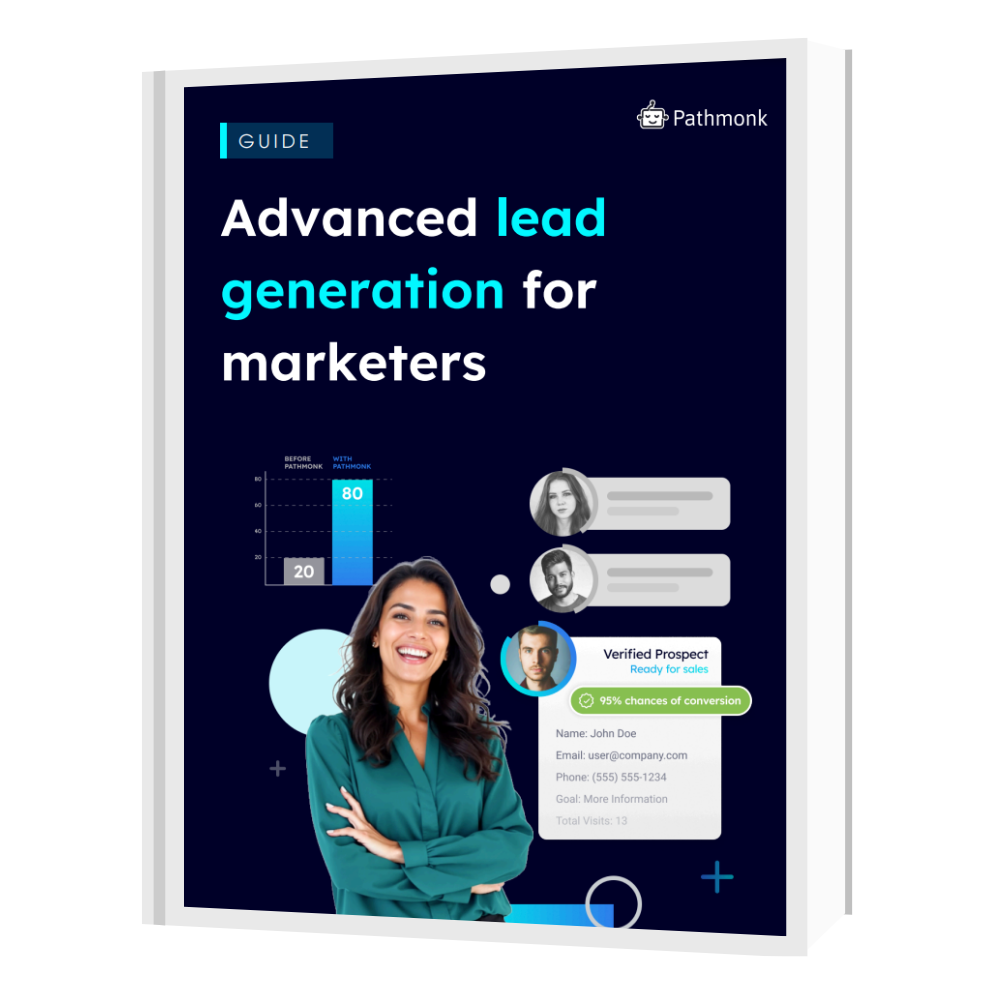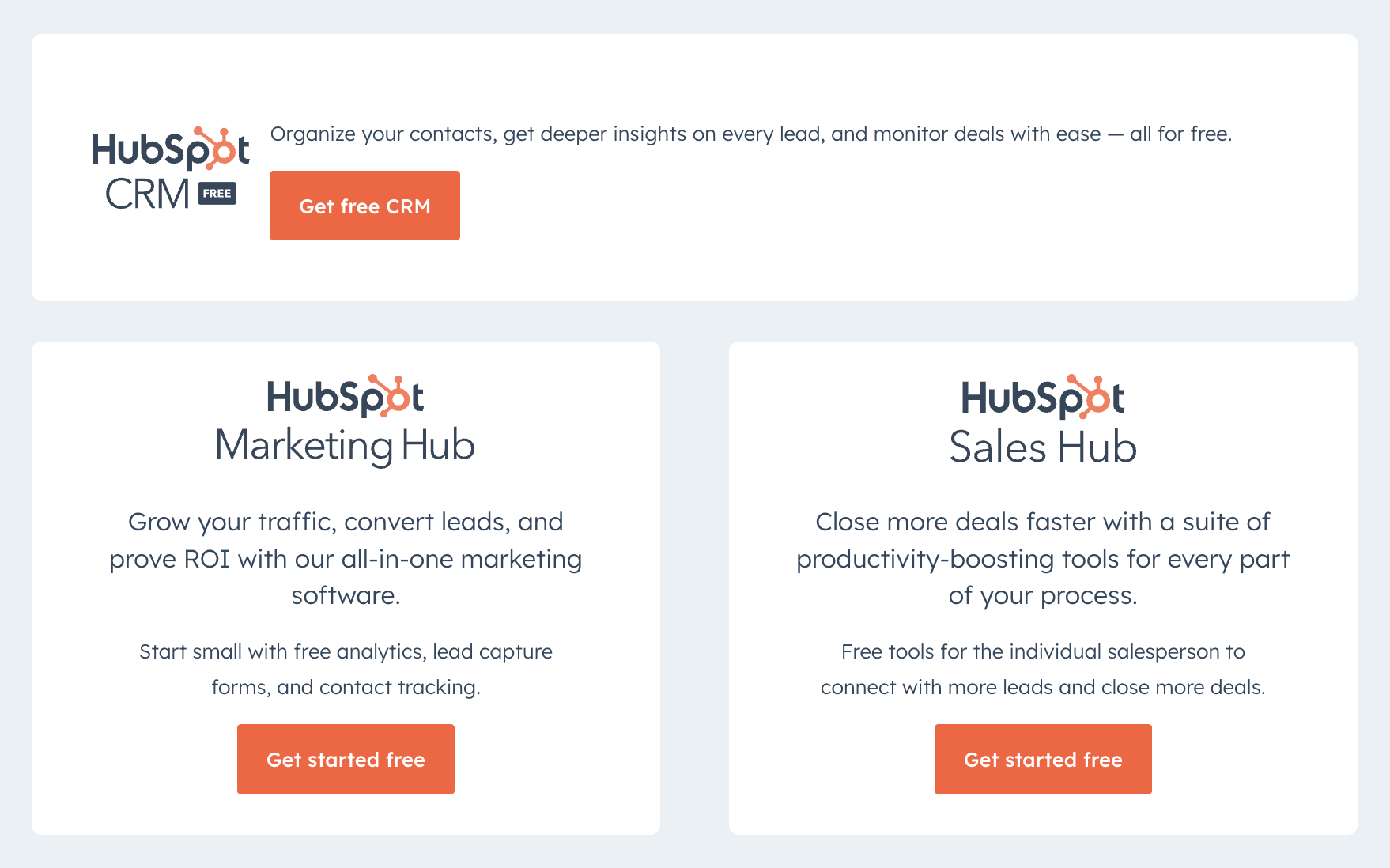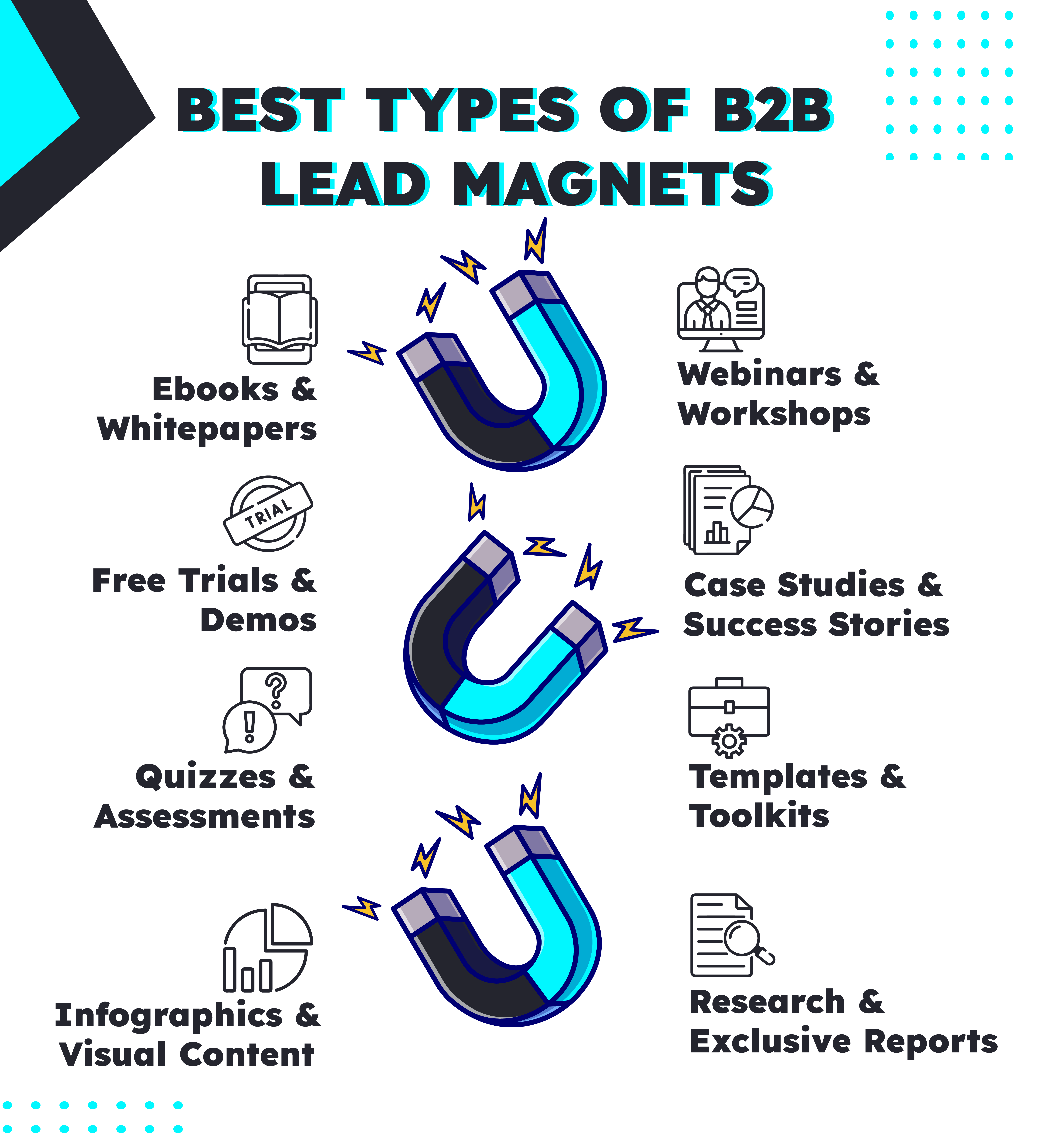
Capturing the attention of potential B2B clients is crucial, yet challenging. The right lead magnet not only piques interest but also opens the door to a wealth of sales opportunities.
But to create successful B2B lead magnets, marketers need to create content that speaks directly to the needs and challenges of their target audience.
From educational content like whitepapers and webinars to free trials and consultations, discover how you can transform your outreach and dramatically increase your leads with this guide.
Table of Contents
Understanding Your B2B Audience to Cater to Consumer Desires
To effectively engage your audience, you first need to deeply understand their needs, preferences, and motivations. This understanding will inform your strategy for creating lead magnets that resonate deeply with potential customers.
There’s several ways you can do this:
- Conduct market research: We have a full step-by-step guide showing you how to do market research like a pro. Utilize surveys, focus groups, and market research to gather data about your audience’s demographics, interests, and behavior. Tools like Pathmonk Intelligence will also provide insights into what content your audience consumes, their online behavior, and their purchasing habits.
- Customer feedback: Actively seek feedback from current customers through reviews, customer support interactions, and direct outreach like email surveys. Listening to existing customers gives you a clear picture of what aspects attract them to your products or services and can indicate what potential customers might also appreciate.
- Social listening: Monitor social media channels for mentions of your brand, competitors, and keywords related to your industry. Social listening tools can help you catch unfiltered consumer opinions and emerging trends, providing real-time insight into consumer desires and pain points.
- Persona development: Compile your research into buyer personas—detailed profiles of your ideal customers that include their needs, goals, and behavior patterns. These personas help you visualize who you’re marketing to and tailor your lead magnets accordingly.
🎁 Free resource: Customer Persona Template
- Competitor analysis: Look at what types of lead magnets competitors are offering and how well they are received. Understanding what works (and doesn’t work) in your industry can help you refine your approach.
🎁 Free resource: Competitor Analysis
Once you have a solid understanding of what your audience wants, you can tailor your lead magnets to align with these desires effectively.
A few tips for you to take into account before we start with the fun part:
- Match incentives with interests: If your research shows that your audience values convenience, your lead magnets should reflect this by offering solutions that simplify their lives, such as templates or time-saving tools. If expertise is highly valued, consider providing access to exclusive webinars or whitepapers.
- Use personalization: Utilize data from user interactions and behaviors to personalize lead magnets. For example, if a visitor spends time on a specific service page, offer them a related case study or industry report as a lead magnet through targeted pop-ups or email marketing.
- Educational content for thought leadership: When your B2B audience values expert insights, provide ebooks, webinars, or access to exclusive industry research as lead magnets. Positioning your brand as a knowledgeable authority fulfills an educational need while building trust and credibility.
- Reward engagement: Develop lead magnets that reward users for professional engagement, like offering points or credits towards services for actions such as referring business contacts or participating in industry surveys.
Generate better leads to grow your sales
Discover new strategies to unlocking a flood of high-quality leads from your website.

Best Types of B2B Lead Magnets
1. Ebooks and Whitepapers
Comprehensive, downloadable documents that delve deep into a specific topic, offering valuable insights, analysis, and solutions.
Why it works: Ebooks and whitepapers work by presenting in-depth information in a visually appealing and easily consumable format, establishing your business as a thought leader in the industry. Decision-makers often seek detailed information before making a purchase. Ebooks and whitepapers provide the depth and expertise needed to nurture leads through the consideration phase.
Best practices: Ensure a compelling title, use clear visuals, and provide actionable takeaways. Gate the content behind a form to capture lead information.
2. Webinars and Workshops
Live or pre-recorded online sessions that educate and engage the audience on a specific topic, often featuring expert speakers.
Why it works: Webinars and workshops leverage real-time interaction, fostering a sense of community and expertise. Attendees gain valuable knowledge while the host gains leads and engagement. The interactive nature builds trust and authority. The Q&A sessions allow direct engagement, and attendees willingly provide contact information to access the event.
Best practices: Promote well in advance, choose engaging topics, and ensure high-quality production. Follow up with attendees for feedback and additional content.
3. Case Studies and Success Stories
Documented narratives showcasing how your product or service solved a specific problem for a client.
Why it works: Case studies and success stories provide tangible proof of your capabilities, instilling confidence in potential clients facing similar challenges. Decision-makers want to see real-world results. Case studies offer a transparent view of your solutions in action, making them effective conversion tools.
Best practices: Focus on the client’s journey, highlight measurable results, and incorporate visuals for easy consumption.
4. Templates and Toolkits
Pre-designed resources, such as templates, checklists, or toolkits, that provide practical solutions or aid in specific processes.
Why it works: Templates and toolkits offer immediate value, positioning your brand as a helpful resource. Users exchange their contact information to access these ready-to-use tools. Busy professionals appreciate time-saving tools. Offering practical resources establishes your brand as a go-to source for solving industry challenges.
Best practices: Ensure simplicity and usability, customize for your audience, and promote the resource as a productivity solution.
5. Infographics and Visual Content
Visual representations of information or data designed to be easily digestible, shareable, and memorable.
How it works: Infographics and visual content convey complex information quickly, making them ideal for capturing attention and communicating key messages. Visual content is highly shareable and attracts attention on social media, driving traffic and potential leads to your website.
Best practices: Use compelling visuals, simplify complex data, and include a clear call-to-action for lead capture.
6. Quizzes and Assessments
Interactive content that allows users to answer a series of questions to receive personalized results or insights.
How it works: Quizzes and assessments engage users in a personalized experience, making the learning process interactive and enjoyable. People enjoy self-discovery. Quizzes encourage participation, and users willingly provide contact information to receive their personalized results.
Best practices: Craft engaging questions, keep it relevant to your industry, and provide valuable insights in the results.
7. Free Trials and Demos
Offering a limited-time free access or demonstration of your product or service.

How it works: Free trials and demos allow potential customers to experience the value of your offering firsthand, overcoming skepticism and showcasing its capabilities. It provides a taste of the product’s benefits, encouraging users to sign up and explore further.
Best practices: Clearly communicate trial/demonstration duration, highlight key features, and provide easy access to sign up.
8. Exclusive Reports and Research
In-depth studies, industry reports, or research findings that offer unique insights and valuable data.
How it works: Exclusive reports and research position your brand as an authority, attracting professionals seeking the latest trends and insights in their industry. Professionals are willing to exchange their contact information for access to high-quality, exclusive information.
Best practices: Ensure accuracy and relevance, promote the exclusivity of the content, and highlight key findings.
Pathmonk Accelerate: AI-Powered Personalized Lead Magnets
Pathmonk Accelerate is an innovative AI-powered engine designed to enhance the effectiveness of websites in converting visitors into leads by leveraging advanced intent data analysis.
This technology meticulously analyzes the behavior of website visitors to predict their next most likely actions. Based on this prediction, it dynamically presents the most appropriate lead magnet to maximize engagement and conversion probabilities.
Increase +180%
leads
demos
sales
bookings
from your website with AI
Get more conversions from your existing website traffic delivering personalized experiences.

These personalized interactions can range from offering instant discount codes to visitors who show intent towards specific products, to providing pop-up invitations for exclusive webinars that relate directly to the content the user is currently viewing. Pathmonk Accelerate can also prompt users to download a specially tailored eBook or guide based on their browsing patterns and previous interactions on the site, ensuring the lead magnet aligns perfectly with their interests and needs at that moment.
This is why Pathmonk Accelerate is a game-changer in lead generation:
- AI-powered personalization: Pathmonk Accelerate utilizes advanced AI algorithms to analyze visitor intent data in real-time. This allows it to predict a visitor’s next most likely action with a high degree of accuracy. By understanding these behaviors, Pathmonk can deliver highly personalized interactions that are more likely to convert, adapting dynamically as user behavior changes over the course of their visit.
- Automatically generated experiences: Pathmonk Accelerate allows marketers to focus on other critical areas of their business by automating the optimization process. The AI continually learns and adjusts its strategies based on ongoing data analysis, meaning it improves over time without manual intervention, thus reducing the workload on marketing teams and minimizing the scope for human error.
- Cookieless technology: In an era where privacy concerns are paramount, and regulations like GDPR and CCPA dictate the digital marketing landscape, Pathmonk Accelerate offers a significant advantage by operating without the need for cookies. This not only ensures compliance with privacy laws but also positions the tool as a future-proof solution that respects user privacy while still delivering powerful lead generation capabilities.
- Optimization of existing traffic: Unlike other tools that may require significant adjustments to marketing strategies or additional traffic generation efforts, Pathmonk Accelerate focuses on maximizing results from existing traffic. This means that businesses can enhance their ROI more efficiently by converting a higher percentage of their current visitors into leads, without necessarily increasing their visitor numbers.
- Enhanced user experience: By providing timely and relevant interactions that align with the individual user’s intent and context, Pathmonk Accelerate improves the overall user experience on a website. This relevance not only boosts the likelihood of conversion but also enhances the brand’s reputation, contributing to higher customer satisfaction and loyalty.
Multiply your results too
Implement Pathmonk now and boost your conversions. Our plans are scalable, based on your monthly pageviews






